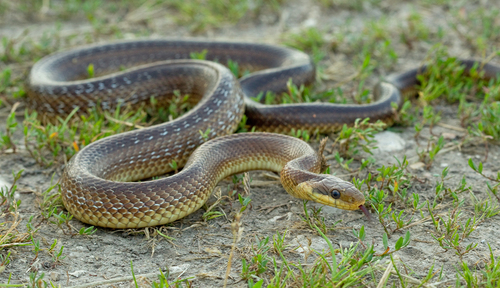
Aesculapian Snake
The Aesculapian snake, Zamenis longissimus, gracefully navigates European forests and grasslands. Its sleek, olive-brown body symbolizes healing in ancient lore. Growing up to 2 meters, this non-venomous snake plays a vital role in controlling rodent populations, showcasing nature's balance and beauty.
25-30 years
Lifespan
Length: 91 - 201 cm
Size
Black, Olive, Multi-colored
Color
Low
Aggression
Least Concern
Conservation Status
Unknown
Population Trend
Characteristics
Zamenis longissimus, commonly known as the Aesculapian snake, is a non-venomous species native to Europe. It thrives in diverse habitats ranging from forests to grasslands. Known for its impressive length, it can grow up to 2 meters, and features a smooth, olive-brown skin. This species is celebrated for its historical association with the Greek god of healing, Aesculapius.
Distribution Range of the Aesculapian Snake
The species Zamenis longissimus, commonly known as the Aesculapian snake, is native to Europe and parts of Asia. It is found in countries such as Italy, France, Germany, Austria, Switzerland, Slovenia, and extends into parts of Eastern Europe including the Balkans. Its range also extends into parts of Western Asia, notably in Turkey.
Aesculapian Snake's Habitat
Environmental Conditions
The Aesculapian snake typically inhabits temperate regions with a preference for areas that provide both forested and open environments. It thrives in deciduous and mixed forests, often near water bodies such as rivers and streams. The climate in its native regions can vary, but it generally prefers areas with mild winters and warm summers.
Ecological Niche
Zamenis longissimus occupies a terrestrial ecological niche, often found in habitats that offer ample opportunities for climbing, such as trees and shrubs. It is a diurnal species, primarily active during the day, and is adept at hunting small mammals and birds. It plays a vital role in controlling the populations of its prey species, thus maintaining ecological balance within its habitat.
Copyright @ Nature Style Limited. All Rights Reserved.
 English
English